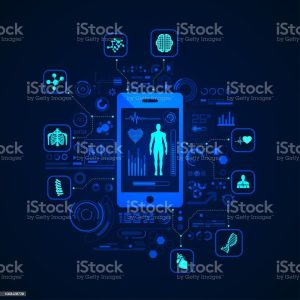Teens always under stimulation, in 300 thousand under internet addiction

Teenagers always under stimulation, 300,000 under internet addiction
Despite the undeniable benefits of technology, more and more data report that excessive use of smartphones, internet and gaming, by adolescents especially when chronic, can produce long-term consequences by affecting the adolescent process of remodeling brain circuits.
Internet or gaming addiction occurs to the detriment of real, school and relationship life and can accentuate social-relational withdrawal, significantly altering the acquisition of emotional, affective and relational skills as well as academic skills.
Addiction to technology can create a state of alertness, with consequences found on attention, memory and sleep patterns.
Adolescents, abuse impacts brain circuits
The impact that the development of technologies, the’use of the net, smartphones and their excessive use can have in sensitive periods of brain development such as the adolescent period are not yet fully assessed.
“Adolescence is a central period of individual development,” explains Francesca Merzagora, Onda President, “which requires the same attention as childhood; it is a fundamental neurobiological transition to shape the adult brain. The role of the family is central in identifying the risks to which adolescents are exposed such as the abuse of new technologies that before sleep negatively impacts brain circuits by altering the sleep – wake rhythm”.
Technology entails a modification of the concepts of time and space, allowing us to observe a profound acceleration of the rhythms of life and at the same time reducing the distances.
“All of this involves sensory overstimulation,” clarifies Gemma Lacaita Socio-Health Director of Asst Fbf-Sacco in Milan, “We are all subjected to increasing stimuli, which can lead to important consequences on individual psychological well-being.”.
Adolescents referred to as digital natives
“Today’s adolescents have been correctly called ‘digital natives,'” continues Claudio Mencacci, Director of the Department of Neuroscience and Mental Health of ASST FBF-Sacco in Milan and author, together with Giovanni Migliarese, of the book “When Everything Changes. Psychic Health in Adolescence” published by Pacini Editore and presented today. “This terminology emphasizes that adolescents experience their identity development in a world where one of the central aspects is technology. It therefore becomes crucial to try to understand what the effect of these tools may be in the adolescent brain shaping pathway.”.
The use of technology is now ubiquitous in Italian adolescents. ISTAT data report that nearly 95% of 14-19 year olds use the internet. International studies report that the use of technology can become problematic in about 1 to 4 percent of these children. In Italy, an estimated 300,000 between the ages of 12 and 25 are those with internet addiction.
Teens who develop a real addiction to the Internet or gaming or social networks may do so to the detriment of their real, school and relationship lives as well, risking isolation and “missing the train” of their adolescence, i.e., a fundamental period in the creation of emotional, affective and relational competencies.
Giovanni Migliarese co-author of the book and head of the Asst-Fbf-Sacco Adult ADHD Center recalls that The World Health Organization has now presented in 2005 an action plan aimed at promoting mental health, finally recognized among the cornerstones of individual well-being. This recognition starts from the finding that mental illnesses carry important consequences for individual functioning and quality of life, impacting not only the well-being of the individual but also that of society.
Certain periods of life need special attention
Some actions are aimed at reducing risk factors related to the slatentization of mental disorders,
while others are aimed at improving lifestyles and making protective factors more effective.
Certain periods of life need special attention, as they are extremely sensitive to factors
pathogens and why intervention at these stages makes it possible to reduce the deleterious effects of diseases on the
long-term. Many studies have reported the early childhood years as central in the developmental
of individual mental health, but it is now well established, as reported by several studies, that we need to
keep our guard up even in the adolescent years, which turns out to be a period of fundamental
neuro-biological transition as well as psychological. In fact, in these years the brain is being shaped, is
define neural connection networks, enabling the individual to acquire cognitive skills,
relational and affective, which will remain essentially stable in the rest of life.
Young people are in an emotional predicament
About 8.2 million young people between the ages of 12 and 25 live in Italy today. A broad audience of teens on
to which our future will be built.
Of these, about 10% (ISTAT data) say they are globally dissatisfied with their lives, their
friendships, family relationships and their health. This figure signals that an extremely
significant number of young people are in a situation of emotional distress, confirmed by the prevalence, always
Around 10%, of depressive or anxious forms in this age group. It is to these 800,000 young people that
attention must be paid by facilitating the recognition of all those “toxic” factors that can
Promote the onset and maintenance of mental illnesses.
But what may be the toxic aspects to pay attention to?
Alongside ubiquitously recognized factors (drugs, stress, abuse and violence,
abuse) in recent years more and more attention has been paid to the possible role of technology. The
Today’s adolescents have been correctly called “digital natives” and experience their own developmental
identity in a world where one of the central aspects is technology’s. What can
be the effect of these tools in the adolescent brain modeling pathway, especially in
Case of excessive exposure to these media?
There are numerous studies in the international literature that point to the developmental effects
brain of the overuse of smartphones, gaming, internet and social networking. One interesting finding,
albeit preliminary, stems from the finding of real changes in white matter
(predominantly of the cortico-subcortical connection bundles) in boys with marked addiction to
smartphones that trace, at least in part, those already found in individuals with addiction to
internet.
Overuse of technology can be an unconscious solution to different kinds of difficulties
in real life. Certain individual characteristics have been associated with the risk of developing a
Internet or smartphone addiction.
Some studies have reported elevated risks for individuals with high-functioning forms of autism, e.g.
For many of these people, technology represents a huge source of knowledge in the areas of
sectors of interest and is therefore in danger of receiving a super-investment. L’overuse of these
tools can fill the void that results from difficulties at the social-relational level, creating a kind of
of stabilization, of false balance, which leads to severe crises when it is interrupted by. Also
ADHD has been correlated with internet addiction and, even more clearly, gaming addiction. The
very structure of some games, with “the incentive to reach the next level” is extremely
attractive to teens addicted to reward.
Excessive exposure to technology has also been correlated with symptomatological worsening in
children and in adolescents with ADHD, and some preliminary data report cognitive effects of the same.
Technologies lead to the development of cognitive abilities according to a “representational model”: the
mode of approach to reality changes, no longer knowing how to do something but how to make it
ask a tool to do it. A child’s use of a tablet, being interactive,
modifies the mode of accessing the real and thus enables a type of learning that is profoundly
different. This is reflected in the allocation of cognitive and mnestic resources by. We no longer know how
do it but where to find the instructions to do it.
Technology thus implements some forms of learning and some cognitive skills at the expense of others.
“ubiquitous presence of technology causes what could be described as a real and
own sensory overstimulation,” Mencacci explains. “Kids are always exposed to micro-
stimulations through smartphones. Alerts, messages, likes tend to create a state of alertness, with
consequences found on attention, memory and sleep patterns. Nearly 90 percent of
boys report experiencing the phenomenon of ‘phantom vibration’ or the false alarm of
receiving a message on a cell phone.”.
Technology pushes toward the implementation of different attentional modalities. We need to
greater flexibility and speed. Several studies report that there is a greater tendency to multi-
tasking, which promotes more diffuse attention but results in a tendency to
worsening performance. Even the mere presence of a potentially active device is
related to a lengthening of task completion time, as a state of
of alertness that leads us to check the phone several times even in the absence of real signs.
Memory is also affected by technological development.
Memory is externalized: we delegate the storage of a number to the cell phone or the Internet
more and more information, creating different mental maps that we need to retrieve it.
“I don’t know what, but how”. There are objects and applications for remembering everything, not just The numbers of
phone, but the location where we parked, or where we left our car keys.
Several studies have looked at the cognitive effects of gaming exposure with preliminary results but
extremely interesting. Video games improve visual attention and coordination, but, some
data suggest an increase in impulsive and aggressive behavior.
“Technology allows enormous advantages on the side of knowledge acquisition, especially
of sectoral and technical knowledge, while it risks not helping in the creation of skills
Emotional, emotional and relational. The central aspect of adolescence, which we might also refer to as
the age of choices, results precisely in not leaving unresolved emotional, relational and
affective. Central, therefore, is the need to pay attention to children who show a pattern of
problematic use of these media,” Migliarese concludes.



